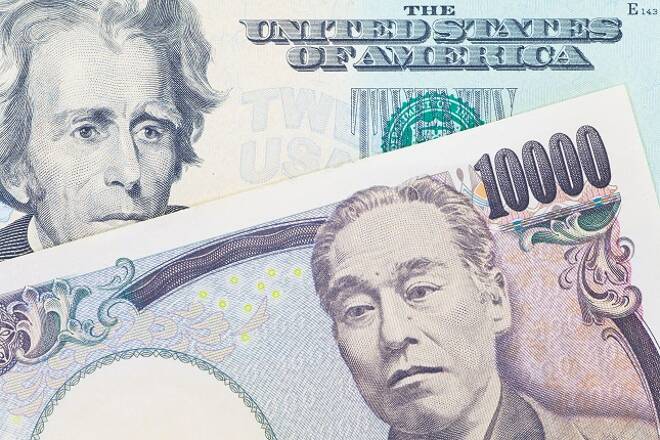Advertisement
Advertisement
USD/JPY Fundamental Daily Forecast – Two-Sided Trading Being Fueled by Investor Uncertainty
By:
Weakness in the global equity markets led by the sell-off in the U.S. NASDAQ Composite on Wednesday is driving investors into the safety of the Japanese
Weakness in the global equity markets led by the sell-off in the U.S. NASDAQ Composite on Wednesday is driving investors into the safety of the Japanese Yen early Thursday. Overall nervousness over trade issues and a widening U.S. trade deficit is also pressuring the Dollar/Yen Forex pair.
At 0556 GMT, the USD/JPY is trading 111.353, down 0.176 or-0.16%.
This week’s choppy, two-sided trade could also be a function of general nervousness during key Brexit negotiations and ahead of the announcement of additional tariffs on China, renewed trade talks between the U.S. and Canada, and this Friday’s U.S. Non-Farm Payrolls report. Traders are also rushing into the Yen on continued emerging market worries.
It’s not just one event that is driving the price action in the USD/JPY, which makes trading off the headlines rather difficult. It’s actually a battle between two safe-haven currencies. Investors who prefer a more favorable interest rate differential are moving money into the U.S. Dollar. Investors who borrow cheap money in Japanese Yen are paying back these loans in local currency.
In U.S. economic news on Wednesday, new data showed the U.S. trade deficit in July widened at its fastest rate since 2015 as monthly deficits with China and the European Union both hit new records. According to the data, in 2018, the U.S.’s overall goods and services deficit is up by $22 billion, or 7 percent, versus the same period last year.
According to the Commerce Department, in July, the U.S. trade deficit soared by 9.5 percent to $50.1 billion, putting America on pace for tis largest annual gap in a decade. The U.S. trade deficit with China swelled to a record $36.8 billion.
In other news, several Fed speakers offered their opinions on the direction of interest rates. Early in the session, St. Louis Fed President James Bullard said Wednesday that the central bank ought to pause further interest rate increases because its stance is already neutral or restrictive. FOMC Member Bostic delivered a hawkish speech, while FOMC Member Kashkari sounded dovish in his speech.
Atlanta Federal Reserve Bank President Raphael Bostic said on Wednesday with the U.S. economy at full employment, inflation at the Federal Reserve’s 2-percent goal, and the economic risks balanced, the U.S. central bank needs to keep raising interest rates.
Also on Wednesday, Minneapolis Federal Reserve Bank President Neel Kashkari, a noted dove, offered his assessment of the economy and his opinion on Fed policy. Kashkari said that he still believes the economy is not overheating yet, prompting him to continue his objection to rate increases.
Forecast
Fed speakers and fresh U.S. economic data will be watched closely on Thursday along with potential surprise events pertaining to tariffs and trade disputes.
The major U.S. reports are ADP Non-Farm Employment Change and ISM Non-Manufacturing PMI. The ADP report is expected to show the private sector added 195K jobs in August. The services PMI report is expected to come in at 56.8, up from 55.7.
About the Author
James Hyerczykauthor
James Hyerczyk is a U.S. based seasoned technical analyst and educator with over 40 years of experience in market analysis and trading, specializing in chart patterns and price movement. He is the author of two books on technical analysis and has a background in both futures and stock markets.
Advertisement
